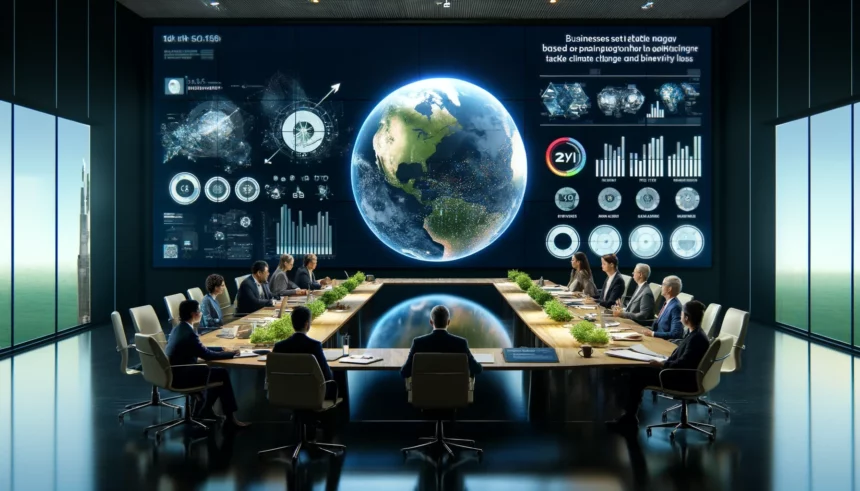Atmospheric levels of greenhouse gases are at record highs. We’ve lost two-thirds of species in the past 60 years due to industrialization. On World Biodiversity Day, it’s a good time to look at what needs to change — and how businesses can be a big part of the solution.
The Urgency of Our Situation
Despite global promises and calls to action on climate change and biodiversity, we’re far from achieving true sustainability. The World Meteorological Organization (WMO) estimates there’s 66% chance global temperatures will exceed the 1.5°C increase from pre-industrial levels in the next five years. We’re on track for a nearly three-degree rise by 2100, which could cause catastrophic and irreversible damage.
We’re in the midst of a human-caused mass extinction, with a million species at risk of extinction in the next decade if we do nothing. Plastic pollution is so bad that by 2050, there could be more plastic than fish in our oceans.
Planetary Boundaries: A Framework for Understanding
The Planetary Boundaries framework maps out these interconnected threats. These scientifically defined thresholds show the limits within which humanity can safely operate without causing severe disruptions to Earth’s systems. Out of nine boundaries, we’ve already breached five, including the two “core” boundaries of climate change and biosphere integrity. Johan Rockström, who led the development of this framework, warns that the window to reverse these trends is closing fast.
Beyond ESG: Building a Sustainable Growth Path
Businesses are making strides with Environmental Social and Governance (ESG) and Corporate Sustainability Reporting (CSR). In 2021, 96% of S&P 500 companies provided sustainability reports, a massive increase from just 20% in 2011.
However, ESG has its flaws. It’s neither a great measurement tool nor an effective risk-management one, according to The Economist. ESG metrics mainly focus on financial materiality — the financial risks that environmental, social, or governance issues pose to a company’s bottom line.
To truly embed sustainability in business operations, companies need to measure their impact on planetary boundaries. The European Union has been focusing on “impact materiality” since 2019, a concept far fewer companies have reported on. This shift is where future progress can be made.
Setting Comprehensive Targets
Businesses are no strangers to setting targets, especially for climate change. More than 1,100 companies have signed up for science-based targets through the Science Based Targets Initiative (SBTi), and 83% of Fortune Global 500 companies have climate-related goals.
But climate change is only one part of the picture. Companies must also set targets for biodiversity, a crucial component of planetary health. While over half of companies acknowledge biodiversity loss, only 5% have set quantified targets.
This isn’t just for the sake of nature. Natural resources and ecosystem services currently contribute $40 trillion to the global economy, more than half of the global GDP. Addressing issues like deforestation, land use, and pollution alongside carbon emissions is essential for a holistic approach.
Natural Climate Solutions
Natural climate solutions are low-cost ways to provide almost a third of the climate mitigation needed to achieve the 1.5°C–2°C targets of the Paris Agreement. For example, great whales play a crucial role in carbon absorption. A single whale can sequester 33 tons of CO2 when it dies, and throughout its life, it helps create phytoplankton that collectively absorb 37 billion metric tons of CO2 annually. Increasing whale populations could significantly aid both biodiversity and climate goals.
Profitable and Sustainable Business
Achieving planetary boundary-based targets can be profitable. McKinsey reports that action across 47 targeted levers could get the world back within safe limits for forest cover loss, freshwater consumption, and nutrient pollution. Focusing on just 12 of these levers could deliver a 45% reduction in nature loss and bring an annual benefit of $700 billion, net of costs. This includes practices like regenerative agriculture and reducing food waste and plastic pollution.
Tools and Frameworks for Businesses
To make economic development sustainable, businesses need to move beyond ESG reporting and start setting targets based on planetary boundaries. Various tools and frameworks can help with this:
- UN Conventions: The UN Conventions on Climate Change, Biodiversity, and Desertification have specific targets.
- Sustainable Development Goals (SDGs): These 17 goals provide a global framework for sustainable development.
- International Sustainability Standards Board (ISSB): The ISSB uses the Sustainability Accounting Standards Board (SASB) standards across 77 industries.
- Science Based Targets Network (SBTN): SBTN is developing nature-focused target-setting standards based on planetary boundaries.
Leading by Example
Some companies are already leading the way. Since 2019, L’Oréal has developed over 15 targets across the planetary boundaries. Kering has a biodiversity strategy based on both planetary boundaries and the SBTN’s AR3T framework.
Preparing for the Future
On January 5, 2023, the European Union Corporate Sustainability Reporting Directive (CSRD) came into force. It requires 50,000 companies in Europe to report on their impact on nature, and this number will grow over time.
Businesses must set specific and measurable targets that contribute to all planetary boundaries. By doing so, they can shift from merely minimizing damage to creating positive change for nature and society.
Setting impact targets for nature isn’t just about compliance or risk management. It’s an opportunity for businesses to lead in creating a sustainable and prosperous future for everyone.
















